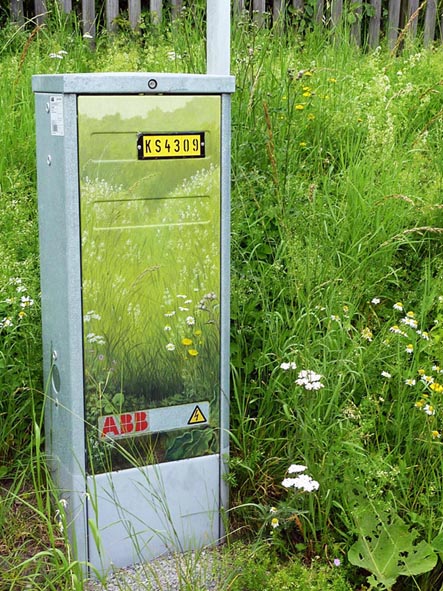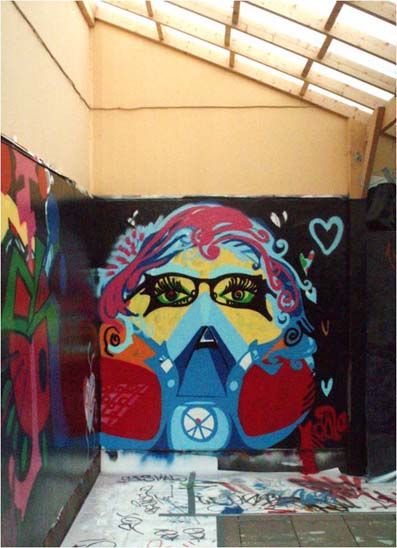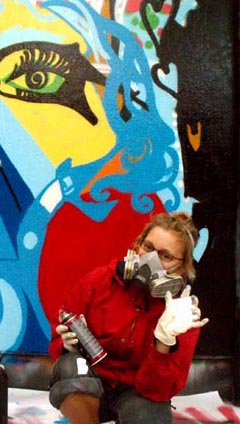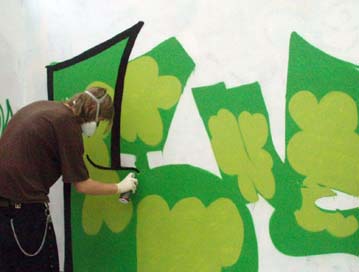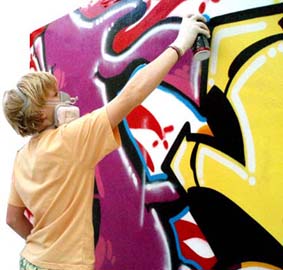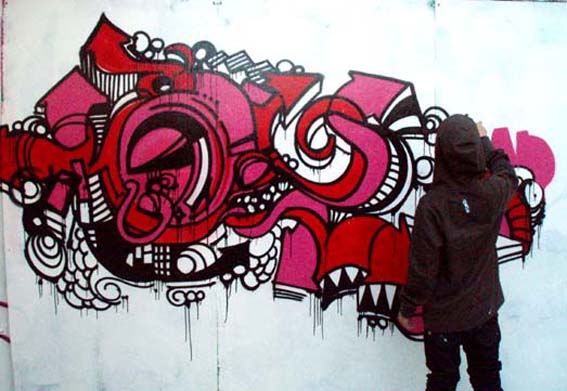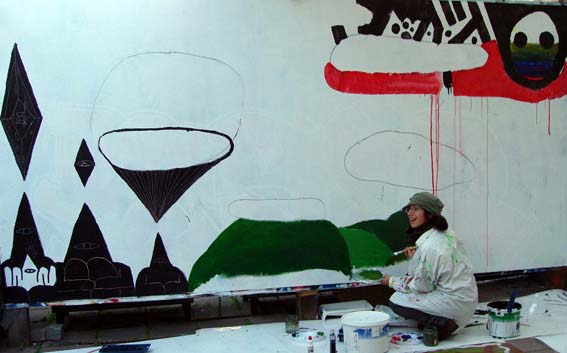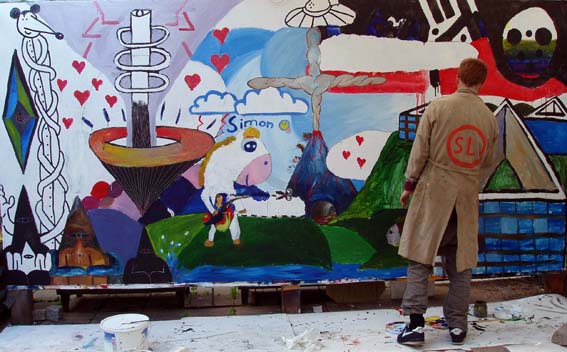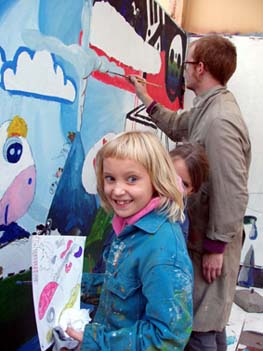 |
GRAFFITI = writing or drawings scribbled, scratched, or sprayed illicitly on a wall or other surface in a public place. Graffiti ranges from simple written words to elaborate wall paintings. I indulge in my own form of graffiti: Decorating electrical cable boxes in public places. Without obtaining permission from the electrical company. Technically speaking, breaking the law. Theoretically, I should be fined or imprisoned, just as most young practitioners of the art of graffiti are treated today. But no! Every passerby applauds my action. Even the electricity company that owns the box approves, writing to the local newspaper, suggesting they print an article on my work. What conclusions can one draw from this? Quite simply, that the campaign against illicite graffiti is no more than a campaign against a particular genre of art. The fact that I am left in peace to continue my "desecration of public property" proves that the issue concerns one definition of good taste employing its considerable power to crush another definition of good taste. Is it really any different from Adolf Hitler's campaign against what he called "decadent art"? Now, do we live in a democratic, civilised society or not? Sometimes I wonder. |
|||
|---|---|---|---|---|
| Photo above: Fredrik Liljeström | ||||
|
Here is the finished "work of art", or finished "criminal act", depending on your attitude to art ... and criminality. Why do I feel so strongly about this issue? I worked for ten years as an art teacher in The Stockholm School of the Arts (Kulturskolan Stockholm). The last two years I ran a "graffiti school" for youngsters between the ages of 13 and 16. I wasn't the teacher of course, more the pupil, since they knew far more than I did about the skills involved in handling a spray can (which, I should add, are considerable, and quite as admirable as those involved in mastering the paintbrush). But what I could contribute was the respect of an adult for their art form (something they longed for). And the experience and knowledge to show them that they worked in a long and honourable tradition (calligraphy), and that, if they left the streets alone, there was a whole world of design that lay at their feet. A profession. In return, I received valuable insights into the world of the young today, for which I am most grateful. After a year, a change in city government brought in a new, more aggressive attitude to graffiti and the project was stopped by the city fathers. My own forays into the field, shown on these pages, should thus be interpreted as a raised glass to the extraordinary, greatly underestimated talents of the younger generation. Give 'em a break! |
